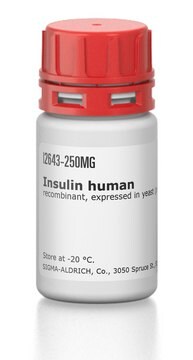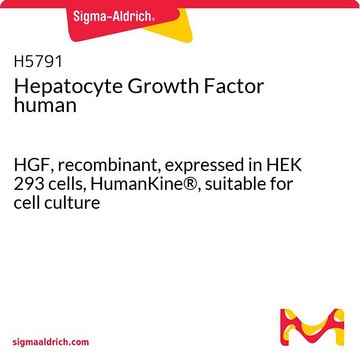G3046
GDF-15 human
Synonyme(s) :
Growth Differentiation Factor 15 human, MIC-1, Macrophage inhibitory cyotkine-1
About This Item
Produits recommandés
Source biologique
human
Niveau de qualité
Produit recombinant
expressed in CHO cells
Essai
>97% (visualized with silver stain, SDS-PAGE)
Forme
lyophilized powder
Poids mol.
dimer 13 kDa (based on N-terminal sequencing, starting at the first histidine of the 6X histidine tag)
Technique(s)
cell culture | mammalian: suitable
Impuretés
endotoxin, tested
Numéro d'accès UniProt
Température de stockage
−20°C
Informations sur le gène
human ... GDF15(9518)
Description générale
Application
Actions biochimiques/physiologiques
It has been discussed to serve as a secreted biomarker for activation of the p53 pathway in human cancer.
Forme physique
Remarque sur l'analyse
Code de la classe de stockage
11 - Combustible Solids
Classe de danger pour l'eau (WGK)
WGK 3
Point d'éclair (°F)
Not applicable
Point d'éclair (°C)
Not applicable
Faites votre choix parmi les versions les plus récentes :
Déjà en possession de ce produit ?
Retrouvez la documentation relative aux produits que vous avez récemment achetés dans la Bibliothèque de documents.
Notre équipe de scientifiques dispose d'une expérience dans tous les secteurs de la recherche, notamment en sciences de la vie, science des matériaux, synthèse chimique, chromatographie, analyse et dans de nombreux autres domaines..
Contacter notre Service technique








